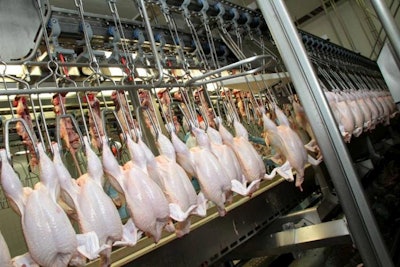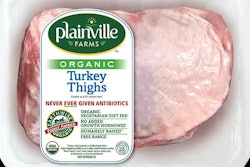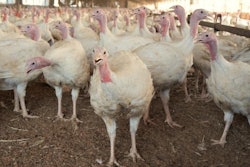
Poultry industry worker safety has seen steady improvement, with current incident rates essentially equal to those of manufacturing as a whole. However, challenges still remain.
In September 2017, the Occupational Safety and Health Administration (OSHA) announced their top 10 most cited standards for the 2017 fiscal year, ended September 30. The one standard that continues to be towards the top of the list is the control of hazardous energy, or Lockout/Tagout.
During fiscal 2017, all of manufacturing received 1,969 proposed citations and an estimated $10 million in proposed penalties. In the same timeframe, the poultry processing industry received 22 proposed citations and an estimated $197,000 in proposed penalties.
Lockout/Tagout is one area of focus for OSHA’s Regional Emphasis Program for Poultry Processing Facilities. Communication of the proper steps to control exposure to hazardous energy continues to be a highly cited standard. These steps are:
- Prepare for shutdown and lockout following machine specific procedures and identify energy sources.
- Locate all isolating devices to be certain which switches, valves or other energy isolating devices apply to the equipment to be shut down.
- Notify all affected employees that the equipment will be locked and/or tagged out and the reason for doing so.
- Shutdown equipment: If operating, the equipment must be shut down by using the proper de-energizing procedures.
- Isolate or release stored energy: All energy must be dissipated or restrained by equipment-specific methods.
- Apply the lock(s) with tag(s): If more than one person is to be working on the equipment, each employee must apply their own lock(s) to all energy isolation devices.
- Test to verify energy isolation: Operate the push button or other normal operating controls to make certain the equipment will not operate.
- Return controls to “off”: Too often after the “Test” step, controls do not get placed back to the off position. This could lead to accidental start up and injury.
- Perform the work: This can include perform servicing, maintenance or cleaning of the equipment.
- Remove lock(s) and tag(s) and notify: The work area should be inspected to ensure that all tools and Lockout/Tagout devices have been removed. Employees must be notified that the Lockout/Tagout device(s) have been removed.
The poultry industry is continuing to see a rapidly growing multi-lingual workforce. This presents a challenge in adequately communicating required safety and health training. To assist in the industry’s training efforts, the U.S. Poultry & Egg Association (USPOULTRY) developed training for ergonomics in 2016 to help overcoming some of the language barriers that can occur in the poultry processing industry.
The training provides a basic awareness and understanding of muscle skeletal disorders, risk factors and controls pictorially, with minimal language. USPOULTRY has now developed a poster and companion short animated video with the goal of illustrating the required steps for performing Lockout/Tagout. Again, the information is communicated visually for proper Lockout/Tagout, so all can understand the appropriate precautions.
Read more:
Poultry industry continues to improve worker safety record, www.WATTAgNet.com/articles/32602















